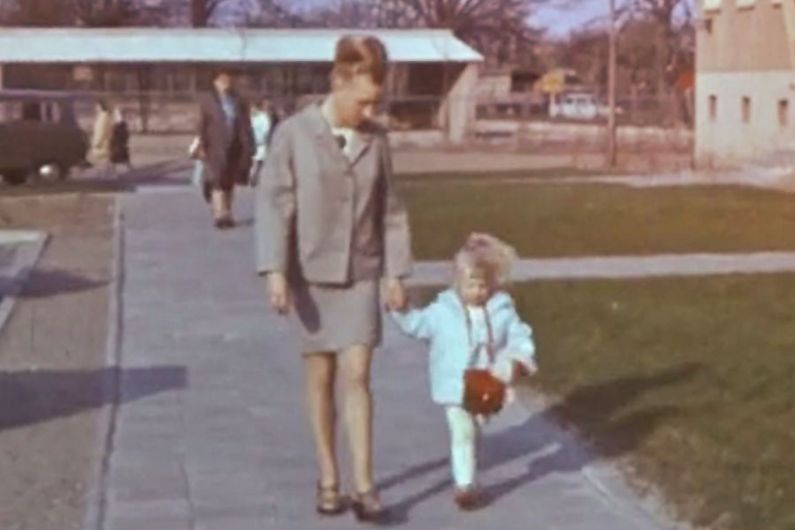Beyond the clichés: a video portrait of daily life in the former GDR
- UdeMNouvelles
11/08/2019
- Virginie Soffer
The largest-ever collection of home movies made by East Germans has been digitized and made accessible online for general viewing, lifting the veil on hundreds of forgotten stories of totalitarianism.
What was life like in the former German Democratic Republic (GDR)?
In a state that kept its citizens under constant surveillance, how did people celebrate weddings? What games did children play? What did East Germans think about the border? For the answers to these and many more questions, we now have access to a treasure chest of authentic home videos that were not produced by the East German propaganda machine.
The largest-ever collection of home videos portraying everyday life in the GDR has been digitized and is now accessible to the public via the online archive OpenMemoryBox. This colossal project, which took more than six years of meticulous work by some 30 employees, builds on material contributed from the private archives of 149 filmmakers from 102 cities and towns in the former GDR.
'Questions stereotyped, memories deformed'
Laurence McFalls is a political science professor at Université de Montréal. Thirty years ago, he was completing his PhD at Harvard when the Berlin Wall collapsed. A postdoctoral fellowship enabled him to travel to East Germany to interview people about daily life in the GDR as part of a longitudinal study during which he followed them for over a decade as they adjusted to life in a unified Germany.
In 2011, McFalls reconnected with several of these people during a sabbatical in Berlin. In talking to them, he was amazed to discover that “their manner of answering questions had become stereotyped, and their memories deformed by what they had seen on TV or in the newspapers. They had nothing original to say. It was as if their memories had been flattened.”
During his sabbatical in Berlin, he was watching his daughter play soccer when he struck up a conversation with another dad, Alberto Herskovits, a Swedish documentary filmmaker whose was daughter was on the same team. Coincidentally, around the same time that McFalls had been researching the collapse of the Berlin Wall, Alberto Herskovits had been making his first full-length documentary on the same subject. The two men discovered they shared an interest in repressed and forgotten memories. Realizing that photographs can stir up memories of the past and that moving pictures can trigger even stronger memories, they decided to put out a call for home videos.
After two years of submitting proposals for funding, they finally obtained their first grant in 2014, which allowed them to start collecting homemade films. From that point, their project began in earnest.
415 hours of moving images
That year, McFalls and Herskovits presented their project at a press conference that sparked a tidal wave of interest among the media and the German public. In mere weeks, they received over 2,200 home movies sent in by former East German citizens, representing some 415 hours of moving images.
In a context of strained relations between East and West Germans, who better than two outsiders to spearhead an initiative to gather these largely forgotten stories. Indeed, East Germans had lost their country and felt that their experience in their own history was misunderstood. They might have been accused of complacency in relation to the past regime. As for the West Germans, who held all the important positions of power, they might have been accused of denigrating East Germans. Better, then, to entrust these stories to the care of someone from the outside.
Two years to digitize, four to categorize
It took the Open Memory Box project team two years to digitize the films sent in and four years to categorize them.
No one had ever taken on a project of this magnitude before. They struggled with how to organize archives whose content was unknown to anyone.
Fortunately for them, an engineer developed a tool that allowed them to capture still images from the screen. Afterwards, specialists in East Germany who were familiar with the context were able to index the content.
They added 50,000 markers to indicate dates, places and themes to facilitate searches in the archives.
No sorting of the films contributed was done. McFalls also wanted to avoid any attempt to impose an interpretation, narrative or common thread. His aim, rather, was to give power back to these people by making accessible the films they themselves had made.
Sequences organized by theme
“There’s nothing so boring as looking at someone else’s vacation pictures,” said McFalls. “And that goes doubly for homemade movies. So we had to find a way to make these private stories interesting.”
One idea they came up with was to group together two-second excerpts from different films under several themes to produce new, two-minute film sequences. For example, under the theme of sport, it’s possible to watch two-second film clips of East Germans running, jumping, water skiing, windsurfing, playing volleyball, etc. People can then click on a specific excerpt to see the full version of the original film. In another section, the archives can be searched by keyword or decade.
This unique treasure trove offers a striking picture of the incredible diversity of life in the former GDR and sheds light on the private lives of East Germans beyond the usual stereotypes.













